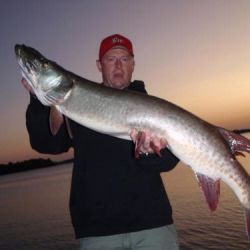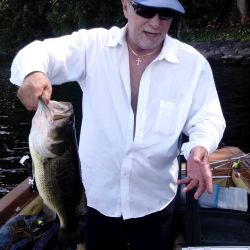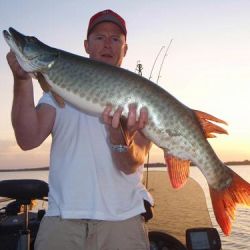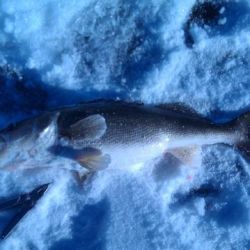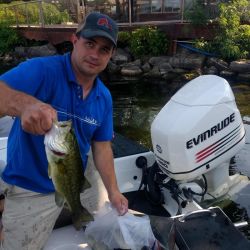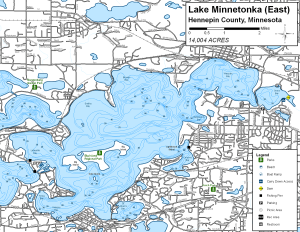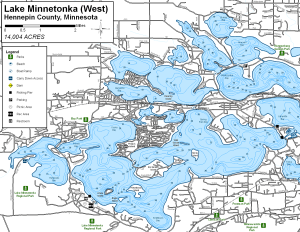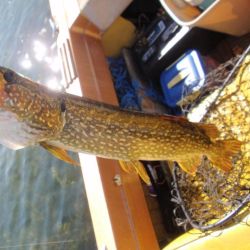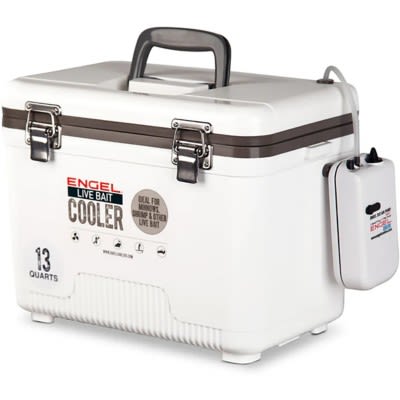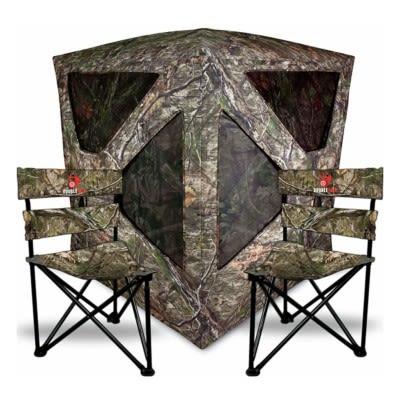Today's Best Fishing Times
Get the best fishing times for Lake Minnetonka with Lake-Link's Fishing Forecast. SEE MORE
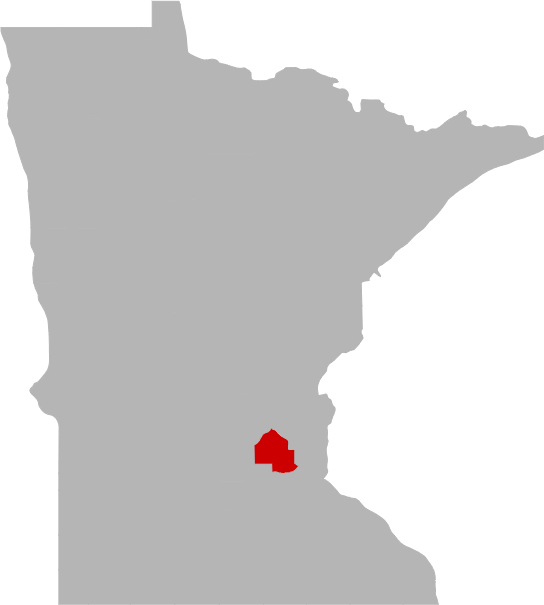
The lake is known for its clear, clean water and is a popular spot for fishing. The lake is home to a variety of fish species, including walleye, northern pike, largemouth bass, and panfish. The lake is also home to a variety of aquatic plants, including wild rice, water lilies, and pondweed.
The lake was first discovered by French explorers in the late 1600s and was named after the Dakota Sioux word for ?big water.? The lake has been a popular destination for tourists and locals alike since the late 1800s. In the early 1900s, the lake was a popular spot for wealthy Minnesotans to build summer homes. Today, the lake is home to many resorts, restaurants, and other attractions.
The lake is also a popular spot for recreational activities such as boating, sailing, and swimming. There are several marinas located around the lake, as well as boat launches and public beaches. The lake is also home to several parks, including the popular Excelsior Commons Park.
Lake Minnetonka is a beautiful lake that offers something for everyone. Whether you?re looking for a peaceful spot to relax or an exciting spot to explore, Lake Minnetonka has something for you. With its clear, clean water and abundance of recreational activities, it?s no wonder why Lake Minnetonka is one of the most popular destinations in Minnesota.

Share Your Catch & Win!
Frequently Asked Questions About Lake Minnetonka, MN
- How big is Lake Minnetonka?
- How deep is Lake Minnetonka?
- What kind of fish can you catch in Lake Minnetonka?
- Are there fishing guides or charters for Lake Minnetonka?
- What are the closest cities to Lake Minnetonka?
- Are there places to stay in the Lake Minnetonka area?
- Are there topographical lake maps available Lake Minnetonka?
- Are there boat launches on Lake Minnetonka?
- Are there places to eat and drink near Lake Minnetonka?
- What is the average air temp for Lake Minnetonka?
How big is Lake Minnetonka?
How deep is Lake Minnetonka?
What kind of fish can you catch in Lake Minnetonka?
Other fish species in the lake include Central Mudminnow, Common Shiner, Golden Shiner, Green Sunfish, Hybrid Sunfish and White Sucker.
Are there fishing guides or charters for Lake Minnetonka?
What are the closest cities to Lake Minnetonka?
Are there places to stay in the Lake Minnetonka area?
More Lodging Options
Are there topographical lake maps available Lake Minnetonka?
Are there boat launches on Lake Minnetonka?
Are there places to eat and drink near Lake Minnetonka?
Explore the Lake Minnetonka area in a RV
Are you looking for an adventurous vacation option that won't break the bank? Look no further than renting an RV! Contrary to popular belief, the process is much simpler than you might imagine. With just a few easy steps, you'll soon be experiencing the ultimate freedom and convenience of exploring the open road in your very own recreational vehicle. And the best part? RV travel can save you up to 60% compared to other types of vacations! With the money you'll save, you'll be able to travel even more and create unforgettable memories along the way. So why wait? Start planning your next adventure today with an RV rental. Learn more about renting a RV.

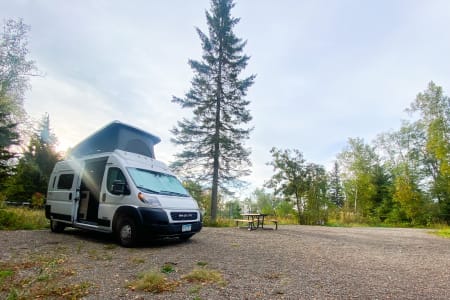
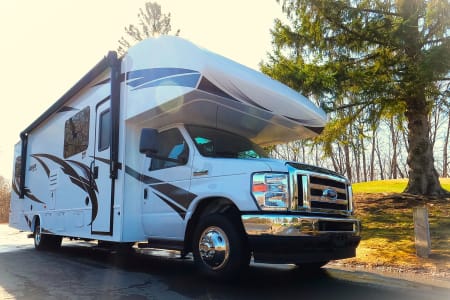
2022 Jayco Redhawk, "The Novaturient" awaits it's next adventure!
Minneapolis, MN
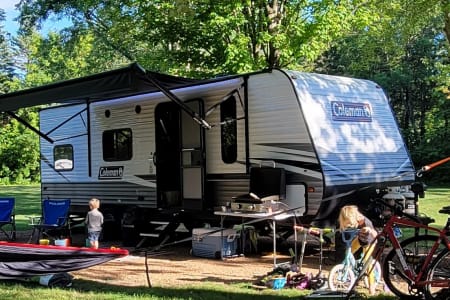
2021 Coleman Lantern 274 Bunk House Travel Trailer -> Great for kids!
Waconia, MN
What aquatic invasive species are found in Lake Minnetonka?
Join us in the fight to prevent the spread of invasive species These sneaky creatures can hitch a ride on boats, clinging onto propellers, anchor lines, and trailers. They can even survive in hidden places like bilge water and ballast tanks, or disguise themselves in dirt and sand that sticks to nets, buckets, anchors, and waders. But don't worry, we have the power to stop them in their tracks with just a few simple steps. So let's do our part and protect our waters from these unwanted invaders.
History & Status of the Fishery
Introduction
The 2016 Lake Minnetonka (27-0133-00) Standard Survey (new term effective 2015; gears and methods same as previous terms of Population Assessment and Lake Survey) was conducted June 13 through June 29. Annual fish sampling began in 1997 following a 20-year period of sampling once every five years. Annual sampling continued through 2012; however the frequency of sampling changed after that survey. The current management plan now requires surveys on even-numbered years (biennially).
This survey describes trends in growth, condition, relative abundance, reproduction, and size structure of three native sportfish species having long timelines of sample data: Walleye, Northern Pike and Yellow Perch. Sampling these species involved 24 experimental gill-net sets at 12 historic locations (24-hr sets; 2 net sets at each location with approximately 7-9 days between net sets. Springtime night electrofishing was also conducted this survey, to evaluate Largemouth Bass. Eleven electrofishing stations were sampled over four nights. In 2016, trap netting was also included in the survey, providing information on Bluegill relative abundance and size structure. Sampling in Lake Minnetonka is divided into three aggregations of basins that differ in their habitat and water chemistry characteristics. Data is analyzed as an entire lake and by basin. Overall, the 2016 gill-net assessment revealed a diverse fish community (18 species) dominated by Northern Pike (36.5 lb/net), Bluegill (5.2 lb/net), and Walleye (8.0 lb/net).
Water Characteristics
Water clarity, as indicated by Secchi-depth values, has been improving in Lake Minnetonka over the past several decades. The Northwest Bays are most fertile, primarily because they are the first recipients of the majority of surface runoff from the watershed. The Upper Lakes are intermediate in fertility, while the Lower Lakes are, relatively, the least fertile. Increasing water clarity can be attributed to improvements in the condition of the watershed. Increased water clarity was observed before the 2010 discovery of zebra mussels. The Minnehaha Creek Watershed District more closely monitors water quality in Lake Minnetonka. For more a more specific, detailed information of Lake Minnetonka water quality, see the District's website (http://www.minnehahacreek.org/data-center).
Walleye
Lake Minnetonka management, as of this report write-up, includes stocking 6,446 pounds of fingerling Walleye in even-numbered years (approx. 96,000-128,000 fish). This equates to 1.1 lb/littoral acre. Starting in the fall of 2010, Walleye were and will continue to be stocked into all three basins of the lake. For more than 30 years prior to 2010, previous management limited Walleye stocking locations to the Upper Lake and Lower Lake basins. Since 2004, most or all of the Walleye fingerlings stocked were purchased from Minnesota-based fish vendors under State contracts.
In 2013, 2014, 2015 and 2016 the Westonka Walleye Program (WWP), a privately-funded organization, received permits to stock Walleye in the Northwest Bays of the lake. Fundraising events are underway to purchase Walleye for 2017 as well. The goal of the WWP is to stock larger fish that will have higher initial survival. The permits allow stocking of even-numbered year-classes that coincide with DNR stocking (so any natural reproduction can be better tracked). In the fall of 2013, the WWP stocked 2,502 yearling Walleye (6/lb). In 2014, they stocked 10,500 fingerling Walleye (8-13" TL, 7/lb). In 2015, WWP stocked 12,964 yearling Walleye (7fish/lb) and in 2016, they stocked 32,000 fingerling Walleye (7.6/lb). Future assessments will look closely to ascertain changes in Walleye abundances and sizes resulting from these stockings.
Despite extensive recent stockings, Walleye abundance, as indexed by gill-net catch-per-unit-effort, has remained at a low density. Since 1977, 22 fisheries assessments have been conducted on Lake Minnetonka; of these, 14 had Walleye catch rates below the first quartile (4.0 fish/net) of Class 22 lakes. Catch rates during this time ranged from 1.5-8.8/net, averaging 4.0/net (median = 3.6/net). In 2016, Walleye abundance (3.3/net) was higher than the 2.6/net caught in 2014. Slightly higher catch rates were observed in the Northwest Bays and the Uppers Lakes. Walleye catch rate dropped in the Lower Lakes, from 3.6/net in 2014, to 3.0/net in 2016. In Upper Lakes, Walleye catch increased from 2.4 to 3.1/net. In the Northwest Bays, catch increased from 1.2 to 3.8 Walleye/net. The long-term (1997-2016) average Walleye gill-net catch per net for Upper Lakes is 4.0 (median=3.5), 4.7 (median = 4.3) in Lower Lakes, and 3.4 (median=3.5) in the Northwest Bays.
The numerical Walleye population estimate, calculated from gillnet catch and fish-age data, was 27,008 fish. Since 1992, the Lake Minnetonka Walleye population estimate range has been 12,465 (in 2005)-72,715 fish.
Historically, size structure indices have shown Lake Minnetonka's Walleye population consists of larger individuals; this was again observed in 2016. Walleye averaged 18.3 inches in length and ranged from 8.1-27.8 inches. Average length was lower in the Northwest Bays (17.4 inches) and in the Lower Lakes (17.6 inches) and higher in the Upper Lakes (19.4 inches). Walleye mean weight in 2016 (2.5 lb) exceeded the third Lake Class quartile (75th percentile) when compared to other Class 22 lakes, and this has been the case since the 1992 assessment. Mean weight was highest in the Upper Lakes (3.0 lb), followed by the Lower Lakes (2.3 lb), and the Northwest Bays (2.1 lb). The general trend had once been for the greatest proportion of larger Walleyes to be located in the Northwest Bays. That changed in the 2016 survey, suggesting an influence of the Westonka Walleye stocking on the size structure of the fish in the Northwest Bays. Growth of Walleye sampled in 2016 was a little faster than in previous assessments. In general, Walleye grew to 13.6 inches by age-3 and 20.6 inches by age-6.
Aging Walleyes using otoliths allowed year-class inferences to be made. Consistent with previous assessments, Walleye natural reproduction is limited. In 2016, 2 of 78 (3 percent) Walleye originated from a non-stocked year-class. In recent assessments, few younger Walleye have been sampled in non-stocked year classes. Age-4 Walleye (stocked 2012 year class) were the most abundant in the 2016 sample (37 percent of the total). These fish averaged 17.9 inches. The 2010 year-class was the second most abundant comprising 31 percent of the total catch. Those 6-year-old fish averaged 20.6 inches.
Northern Pike
From 2002 to 2011, gillnet catch of Northern Pike had decreased every year, from a high of 17.7/net to a low of 6.3/net. However, recent surveys (2012, 2014, and 2016) show an increasing trend to values greater than 10/net. The 2016 catch (13.8/net) is high (above 75th percentile) compared to other Class 22 lakes in the state and is higher than the long-term average of 10.8/net (1977-2016). Northern Pike catch rates in the Lower Lakes (16.0 fish/net) exceeded catch in both the Upper Lakes (15.7 fish/net) and Northwest Bays (5.8 fish/net).
In 2016, Northern Pike average size (2.65 lb) was similar to that found in 2014 (2.73 lb). Mean weight was near the 75th percentile for Class 22 lakes. In the current survey, these fish averaged 21.8 inches in length, which was comparable to 22.4 inches in 2014. Northern Pike mean length was greatest in the Northwest Bays (25.9 inches) followed by Upper Lakes (22.3 inches) then Lower Lakes (20.4 inches). The largest individual captured was an age-7 female at 34.7 inches. Forty-three percent were 21 inches or longer and 15 percent were 28 inches or longer. The largest size structure was found in the Northwest Bays, where 83 percent were 21 inches or longer and 39 percent were 28 inches or longer.
Growth rates were similar to other West Metro Management Area lakes. On average, Northern Pike in Lake Minnetonka were 20.1 inches by age-3 and 27.8 inches by age-6. Nine year-classes were sampled and most fish (89 percent) were between 2 and 6 years old.
This survey was the first since a wintertime spearing ban (enacted winter 1987-88) was rescinded in December 2015. The 2015-16 winter was mild, with thinner ice, so impacts of re-opening winter Northern Pike spearing were likely less than expected and/or delayed. Future surveys could show influences of this regulation change on the species' abundances and size structures.
Yellow Perch
Yellow Perch abundance (11.1/net) in 2016 was moderately low compared to other Class 22 lakes. The Northwest Bays have historically had the highest Yellow Perch abundance and this was again true in 2016. Abundance in the Northwest Bays was 31.2/gill net, 7.4/net in the Upper Lakes, and 2.0/net in the Lower Lakes.
Yellow Perch size structure has been historically small in Lake Minnetonka. In 2016, size structure indices revealed a population consisting of small individuals that ranged in size from 4.9 - 8.6 inches; only 3.3 percent were greater than 8 inches. Mean length (6.5 inches) and weight (0.12 lb) were similar to 2014 values.
Seven year-classes were sampled with the oldest individual captured age-10. Seventy-two percent were age-2 or 3. Yellow Perch growth was similar to other Class 22 lakes in the West Metro Management Area. Growth was consistent among basins; fish reached an average of 6.8 inches by age 3.
Muskellunge
Muskellunge were not targeted during this survey, and onlytwo individuals were sampled. One fish, measuring 14.9 inches, like originated from the 2015 stocking. The second individual measured 48.4 inches and weighed 29.61 pounds. Based on angler reports, Minnetonka's Muskellunge population remains strong. Fish exceeding 50 inches and approaching 40 pounds are caught in Lake Minnetonka every year. Survival of stocked fingerling Muskellunge is assumed to be low due to the high abundance of Largemouth Bass and Northern Pike. Advanced fingerlings and yearlings have been used in recent years in an attempt to improve survival rates of stocked fish.
A research study is currently taking place in Lake Minnetonka comparing the survival of stocked fingerling and yearling Muskellunge. Stocked fish were tagged in 2008, 2009, 2011, and 2012. Muskellunge were tagged with an external spaghetti-type tag near the dorsal fin on the fish's left side. These tags, yellow in color, include a six-digit number. For longer-term tracking, an internal PIT-style tag was also inserted and can only be detected with a specific reader. Angler reports of captured tagged Muskellunge are essential to the success of this project. If you catch a tagged Muskellunge please record the tag number and length of fish and report the catch via the Tagged Fish Reporting page within the MNDNR website. Please DO NOT remove the tag. Please contact the West Metro Area Fisheries Office with questions. Practicing CPR (Catch, Photo, and Release) is essential to maintaining the trophy Muskellunge fishery found in Lake Minnetonka.
Largemouth Bass
The Largemouth Bass population in Lake Minnetonka has a reputation for quality fishing. In May 2016, a nighttime boat electrofishing assessment was performed to target Largemouth Bass. A total of 138 Largemouth Bass were sampled in 11 electrofishing transects, equating to 49.9 bass per hour of on-time. The size structure of the Largemouth Bass population in Lake Minnetonka is well-balanced and the fish are in good physical condition. Largemouth Bass averaged 9.9 inches and 0.65 lb, lower than in 2014 when fish averaged 11.8 inches and 1.04 lb. The largest bass sampled was 18.7 inches long and 3.7 lb. Fish from the 2004 through 2015 year classes were present, indicating consistent reproduction and recruitment. Age-2 bass from the 2014 year class were most abundant (24 percent), followed by the 2013 (21 percent of the total) and 2012 (14 percent of the total) year classes. Largemouth Bass reached 14 inches by age 8 and 18 inches by age 11. No Smallmouth Bass were sampled during the spring electrofishing assessment.
Numerous bass tournaments are held on the lake every year. Larger tournaments require DNR permits that include submission of some fish-related data. In 2016, 11 permitted bass tournaments reported totals of 1,058 tournament anglers, 3,947 Largemouth Bass and 197 Smallmouth Bass during these events. The number of Smallmouth Bass reported in 2016 was quite large compared to previous years. Average Largemouth Bass size was 2.34 lb and the largest recorded was 6.69 lb. Since tournament bass anglers target the largest individuals, and tournaments usually apply minimum size requirements, results typically show larger size fish, on average, than electrofishing sampling, where all Largemouth Bass sampled are used for analyses.
Bluegill and Other Fish Species
Bluegill and Black Crappie are abundant in Lake Minnetonka and thus are not of enhanced management focus. Bluegill were sampled by trap netting in 2016, as part of a statewide study of the ecological impacts of Muskellunge stocking. The fish were caught at a rate of 72.9 fish per trap net, which is very high for this type of lake. Bluegill averaged 5.9 inches and 0.17 pounds; the largest individual was 8.3 inches. Caught at a rate of 7.4 per gill net, Black Crappie are highly abundant and modestly sized. Black Crappie averaged 6.8 inches and 0.17 pounds, with the largest individual measuring 10.4 inches. Consistent natural reproduction and high recruitment of these species have ensured quality angling opportunities.
Black Bullhead, Brown Bullhead, Green Sunfish, hybrid sunfish, Pumpkinseed Sunfish, Rock Bass, Smallmouth Bass, Yellow Bullhead, Common Carp, Golden Shiner, and Bowfin were also captured in low numbers during the 2016 assessment. Smallmouth Bass were sampled only in the Lower Lakes.
Invasive Aquatic Species
Eurasian watermilfoil and curlyleaf pondweed are found in high abundance throughout the lake and in 2010 zebra mussels and flowering rush were first found to be present. Lake Minnetonka receives heavy recreational use, so potential for the spread of invasive species into and out of the lake is high. Anglers and boaters should take the precautions-and follow statewide laws- to prevent the further spread of all invasive species.
The shoreline and watershed of Lake Minnetonka is highly developed, which puts stress on the lake's aquatic habitat and ecosystem integrity. Large docks, boating platforms, and man-made beaches have the potential to destroy vital habitat for fish and wildlife. Environmentally conscious land use practices, such as shoreline buffer strips of natural vegetation and fallen woody debris, are necessary to maintain or improve water quality of Lake Minnetonka. Shoreline development, invasive species, fish disease potential (such as Viral Hemorrhagic Septicemia [VHS] and Largemouth Bass Virus) should be a concern to everyone who enjoys lake recreation.
What is the average air temp for Lake Minnetonka?
Lake Minnetonka Reviews
Below is the word on street about Lake Minnetonka.Have you been to Lake Minnetonka? Why not share your personal reveiw with others?
Submit Review
comp u.

Stay off the lake on the week ends in the summer
Fishing can be GREAT almost any time. Spring and fall during the week is best because the citiets are not everywherecomp u.

zane j.

More Nearby Lakes To Explore
There's more lake's to explore around Lake Minnetonka...| DISTANCE | ACRES | MAX DEPTH | |
| Tanager Lake | 2.7 mi | 53 | 23 ft |
| Forest Lake | 2.8 mi | 90 | 42 ft |
| Christmas Lake | 3.4 mi | 267 | 87 ft |
| Lake Virginia | 3.4 mi | 105 | 34 ft |
| Lake Minnewashta | 3.5 mi | 677 | 70 ft |
| Lake Lucy | 3.9 mi | 88 | 20 ft |
| Langdon Lake | 4.0 mi | 143 | 38 ft |
| Lake St. Joe | 4.0 mi | 19 | 52 ft |
| Tamarack Lake | 4.3 mi | 28 | 82 ft |
| Lake Ann | 4.4 mi | 116 | 45 ft |


 (6)
(6)

